Closing Window of Opportunity: Mapping Threats to Important Areas for Conservation in the Pantropics
Download Report 下载简体中文版 Executive SummaryOil & Gas and and Mining Threats to Key Biodiversity Areas and Indigenous Territories:
- 518 KBAs (or 18% of KBAs by area) in the pantropics are under active and potential oil and gas concessions.
- Over 180 million hectares of high-integrity forests are either undergoing or have planned fossil fuel extraction projects across the pantropics.
- Oil and gas blocks overlap with 14% of KBAs and 12% of Indigenous Territories by area in the Amazon.
- Oil and gas blocks overlap with 40% of KBA area in the Congo Basin, while mining concessions overlap with 16% of KBA area.
- In Southeast Asia, 14% of the total area of KBA’s is overlapped by oil and gas blocks.
Interactive Map
There is a closing window of opportunity to protect critical ecosystems before they are further fragmented. This research and report co-published by Earth Insight, International Indigenous Forum on Biodiversity (IIFB), the IUCN World Commission on Protected Areas (WCPA), Campaign for Nature, One Earth, and Wild Heritage explores what is at stake for Key Biodiversity Areas, Indigenous Territories, and Protected Areas in the Amazon and Congo Basins and Southeast Asia.
The global effort to protect our planet's most vital ecosystems is reaching a crucial tipping point. Extractive industries such as oil, gas, and mining are expanding in some of the world's most ecologically important areas, particularly across the pantropical belt. As these industries expand, the window to safeguard these critical ecosystems and the Indigenous Territories they encompass is rapidly closing. Urgent, coordinated global action is needed to prevent irreversible damage to these natural areas that sustain life on Earth.
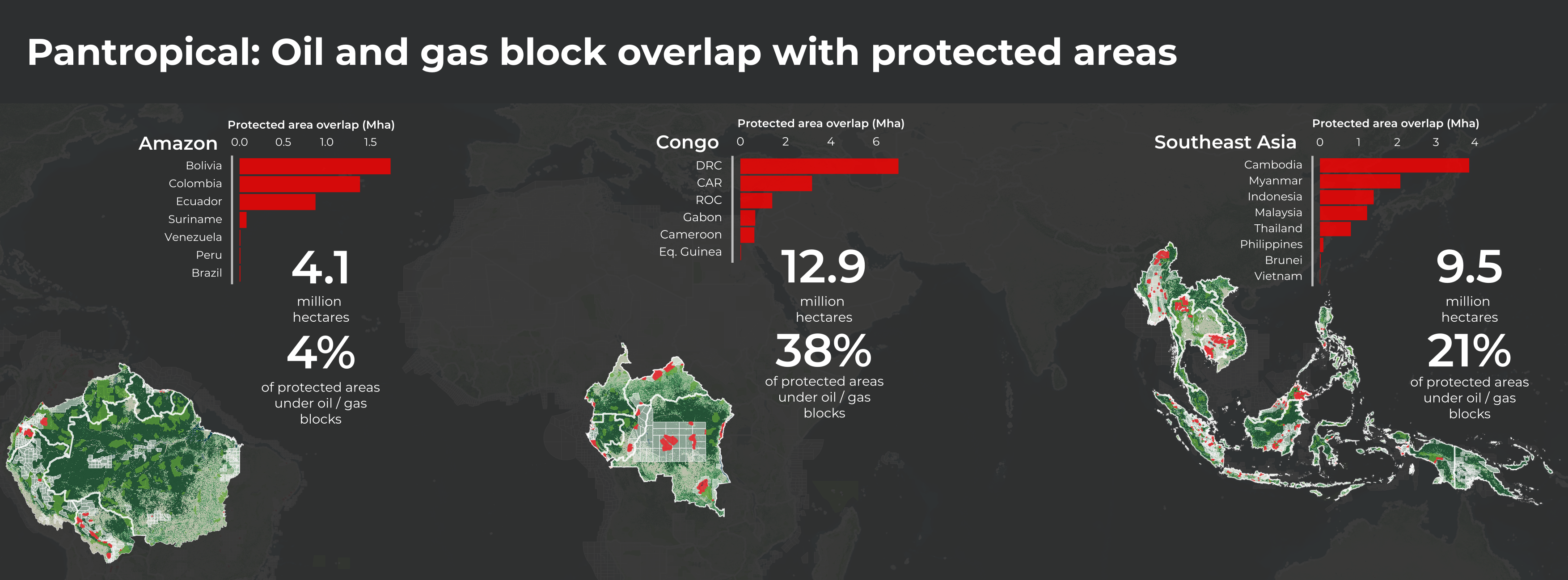
Protected areas, covering 17.5% of Earth's land and freshwater, have long served as safe havens for nature. But it’s clear that more targeted and ambitious conservation measures are required. Areas like undisturbed tropical forests, Key Biodiversity Areas (KBAs), and Indigenous Territories, which are rich in natural resources, must be prioritized. Unfortunately, their wealth of resources has also made them targets for industrial exploitation. Sacrificing these critical areas to resource extraction would compromise the ecological resilience we urgently need— and once they're lost, no amount of profit can bring them back.

The expansion of oil, gas, and mining activities into these regions has alarming consequences. Ecosystems that provide essential services such as clean water, fertile soil, and carbon storage risk collapse if industrial activities are not curtailed. Once these systems are lost, restoring them is nearly impossible. This is particularly concerning for Indigenous Peoples whose cultures and livelihoods are deeply interconnected with these environments. The survival of both ecosystems and traditional ways of life is at stake.
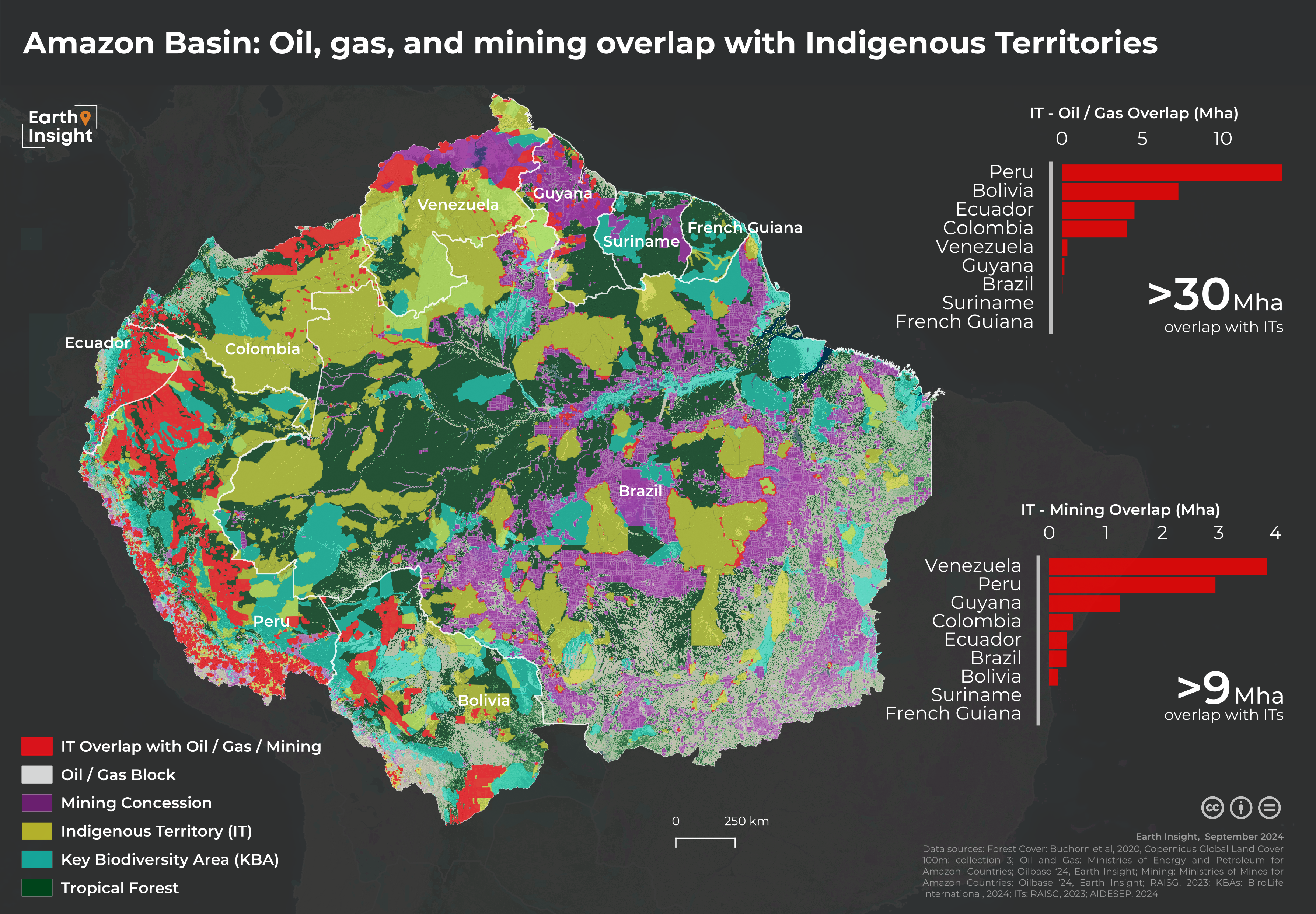
This report highlights the overlap between oil, gas, and mining concessions with conservation hotspots like the Amazon Basin, Congo Basin, and Southeast Asia. These areas are home to immense biodiversity and store vast amounts of carbon. They play a critical role in regulating the global climate, but they are also highly vulnerable to industrial exploitation. The impact of such expansion could be devastating, not just for the local environment but for global climate stability.
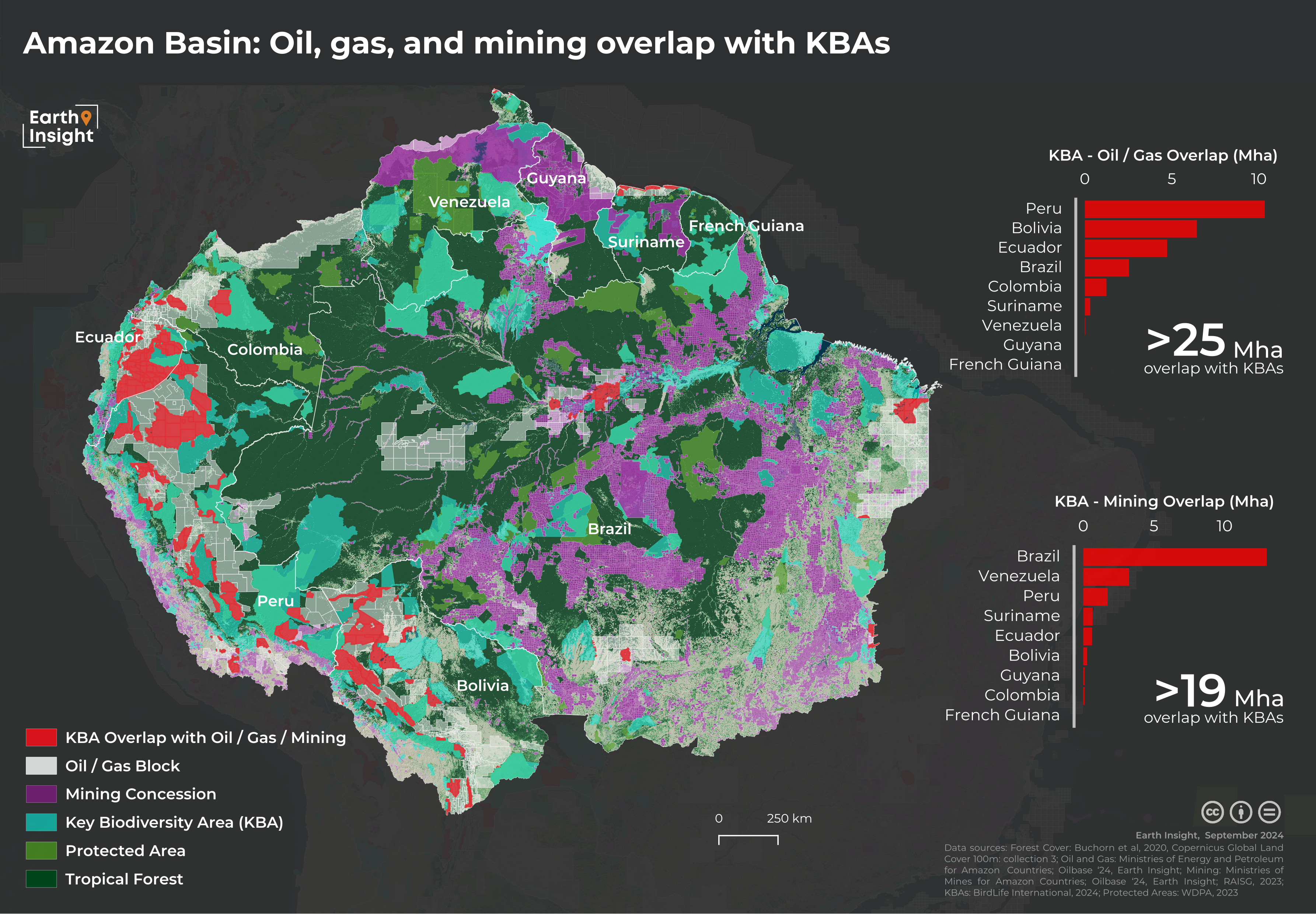
The challenge we face is monumental, but solutions are within reach. Expanding protected areas, supporting Indigenous-led conservation, and strengthening legal protections to prevent industrial exploitation are critical steps we must take. By doing so, we not only protect biodiversity but also uphold Indigenous rights and ensure the long-term sustainability of these ecosystems. The report calls for immediate global action to halt the destructive advance of resource extraction into these critical areas.
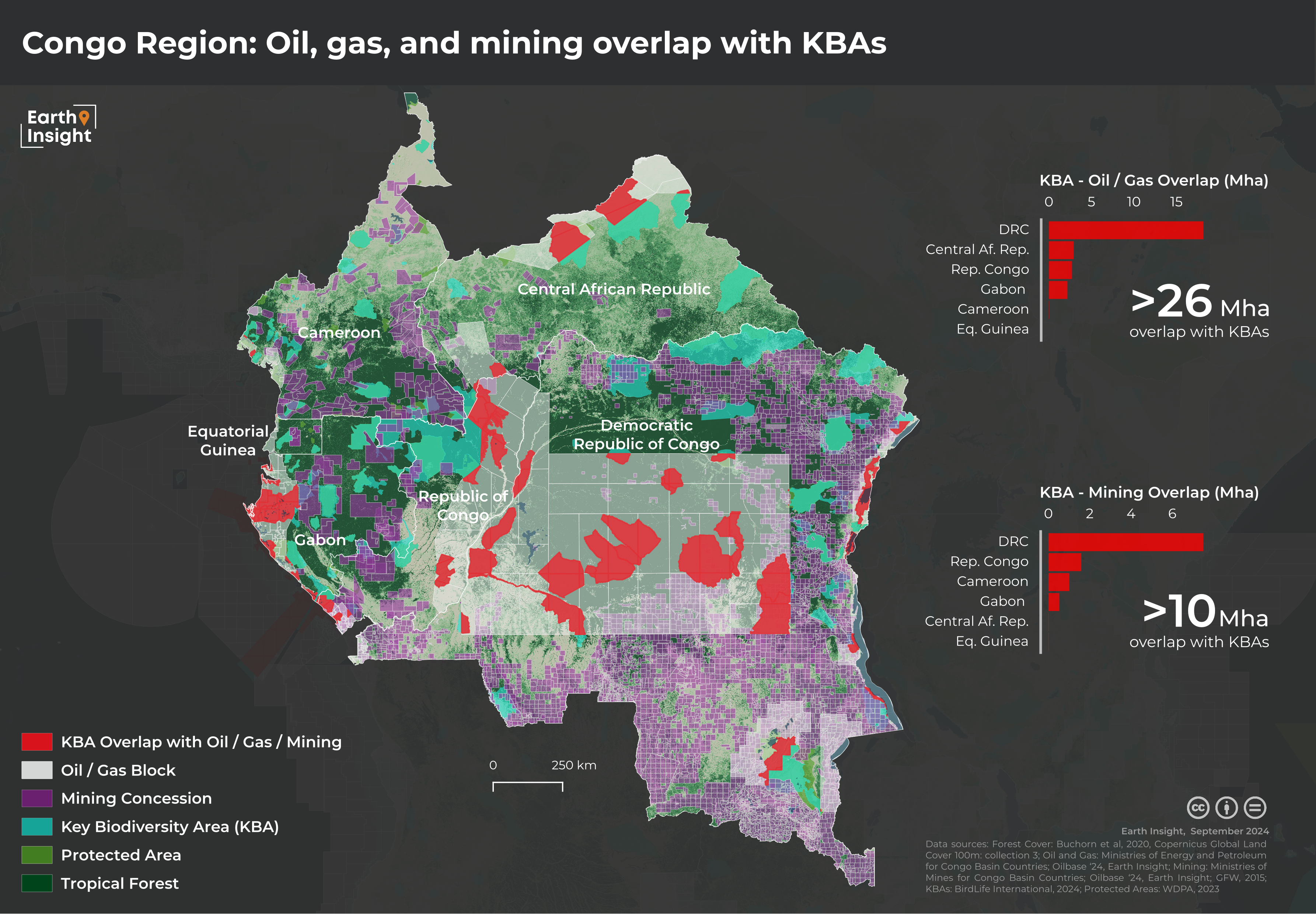
The world now stands at a crossroads. We can either take bold, decisive action to protect these vital ecosystems, or we risk losing them forever. The future of these regions, along with the people who depend on them, hangs in the balance. The cost of inaction is too high—ecosystem collapse would not only affect local communities but would also have far-reaching consequences for global biodiversity and climate regulation.
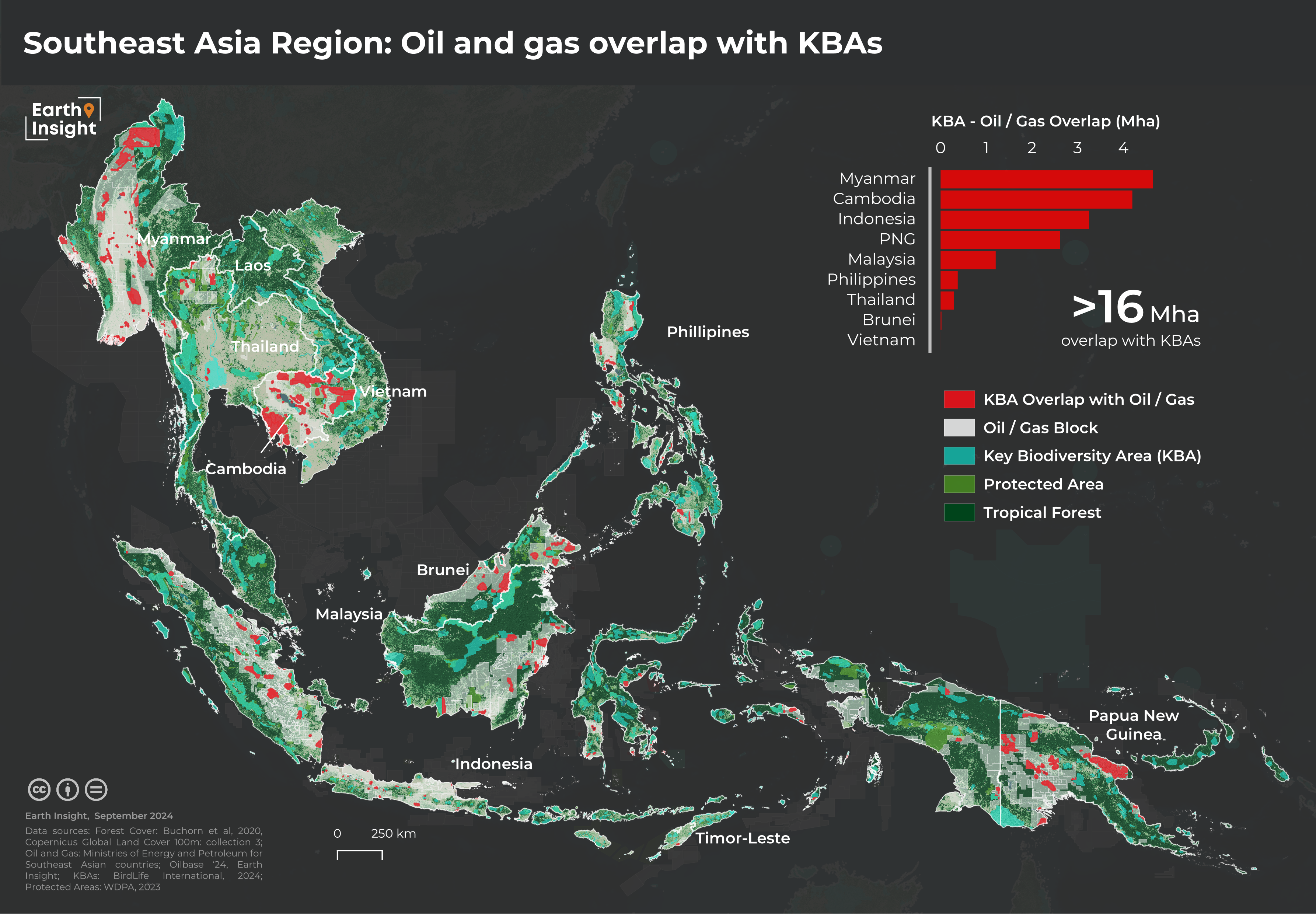
The time to act is now. The clock is ticking, and the window of opportunity is closing rapidly. Protecting these last strongholds of nature is not just an environmental necessity—it’s essential for the survival of ecosystems, communities, and the planet’s future. The choices we make today will determine the fate of our most irreplaceable natural areas and the well-being of future generations who depend on them.


%20(1)%20(1).jpg?auto=compress%2Cformat)